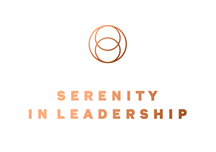Why The Bystander Must Break The Cycle of Workplace Bullying
By Thom Dennis, CEO of culture change and leadership development specialists, Serenity in Leadership.
2020 saw a reported 23% of the UK workforce experience some form of bullying, with a further 25% feeling excluded at some point. We know what bullying is, we know how harmful it is but why are we no closer to halting it? The answer lies in the role which we may each be playing as the bystander, and with International Stand up to Bullying Day (24th February) nearly upon us, we need to ask ourselves as bystanders, are we prepared to break the bullying cycle for someone else?
Bullying may sometimes be born out of competitiveness or jealousy; perhaps it grew from a misunderstanding or started with gossip but quickly developed into exclusion and verbal attacks. Before long, the harassment causes the now traumatised target to resign and following a poor HR plan, the organisation decides to blame the resignation on ‘stress’ and quietly brushes it under the carpet. Although not every case follows this scenario, there are almost always more people involved than the bully and the target.
Whilst many of us would usually identify three potential players in bullying; the bully(ies), the target(s) and the bystander(s), a well-established bullying model developed by Norwegian psychologist Dan Olweus outlines seven key roles involved in bullying; the bully, their followers or henchmen, supporters, passive supporters of the bully, disengaged onlookers who perhaps think “it is none of my business”, passive defenders and defenders.
And bullying can be an expensive business. A former TechnologyOne state manager has lodged a new £53m bullying claim against the business, after the High Court last year ordered a fresh trial in the bitter six-year dispute. Just last week Nestlé has been ordered to pay a former manager two million Swiss francs ($2.2 million) compensation after a Swiss court upheld her claim of bullying while working at the company. The effect of bullying on the individual can be long-lasting and incapacitating and the team’s productivity and creativity can be stifled. So how do break the cycle? This can only be achieved by ascertaining who the bully or bullies are, looking systemically at the culture of the organisation; supporting the target or targets; and then changing followers and onlookers into defenders.
How do you pinpoint the bully?
Power dynamics will reveal the bully. Look for influence beyond their role, as well as aggression and power play and malicious or unjustifiable behaviour. Although it can often involve multiple individuals, there is almost always one primary instigator. The pandemic encouraged online bullying and so it is beholden on managers to be actively on the lookout for it. Make sure the bully knows their behaviour is unacceptable. In some circumstances, bullying can be turned on its head if they are capable of being better. If not, clamping down on this behaviour must be decisive. Breaking the cycle at this point can sometimes be more challenging because it can be subtle.
Anonymity often doesn’t work very well but it can help to start the conversation and reflect undercurrents. In the drama triangle of the persecutor, victim and rescuer, the aggressor can quickly take the form of the victim and draw in onlookers to support them against the target. Rescuers can become the victim themselves. Leaders need to break the cycle by being aware of these roles and deliberately avoiding being drawn into the triangle.
How do you support the target?
Bullying is still bullying even if it is subtle. Calling out subtle bullying in its infancy can often prevent it from developing any further into something bigger. Any target must be supported and heard, and need to know they will not be fired, left ignored or picked upon because they complained. An employer has responsibilities to provide a safe workplace, have a zero-tolerance policy and a clear anti-bullying strategy which they action, and leaders need to be committed to it. The workplace must actively value inclusion and diversity. The next steps to break the cycle are by supporting, protecting and empowering the victim, and this is where the defenders come in.
How do you ensure the accusations are valid?
In some sectors since the pandemic there has been an increase in invalid or malicious accusations. The harm of being falsely accused causes the same injuries, both psychological and physical, as those who are bullied. This highlights the real need for first-responding professionals to have mandatory trauma-informed, in-depth training in for example, setting up safe, timely, and skilled investigations. HR professionals also need to be held accountable regarding due diligence, for instance recusing themselves if there is any risk of bias or conflict of interest.
Onlookers – It IS your problem.
The bullying cycle gains momentum through the bully’s supporters. Willingly partaking from the sidelines or failing to take action makes you an accomplice. What are you observing, what’s going on and what is making you feel uncomfortable? Having several people with the courage to speak up adds more clout and may be much easier to do than a lone voice, but someone has to take the first steps. It takes one to stand up but then when they are joined by another, they have doubled their voice and four is better than two and so it goes on.
Many businesses operate using a fear-based model that you will lose your job if you step out of the party line which equally influences the ability to call someone out. We need to be able to enable whistleblowing without fear of retaliation and repercussions. Asking for wrongdoings to be addressed is powerful.
Become An Active Defender.
This doesn’t necessarily mean putting yourself in the line of fire and standing between two warring parties. Sometimes that is possible but there are other ways too. Be a role model and use your emotional intelligence to help create a well-functioning work environment with respect at the heart of it. Enable workplace resilience by demanding transparency, accountability and inclusivity and using workplace protocol to highlight issues. Reach out to the target and replace disconnection with communication and helping them know they are seen. Ask HR or line managers to see and address misuse of power and privilege in the workplace especially if the wrong people are being empowered. Create real dialogue so anyone has a safe space to talk about their concerns with leaders. A great way to bring about change is through facilitated dialogue so that people with totally opposite views can hear each other and find ways to eliminate biases.
Author/Source: Thom Dennis






